Carlo Calma weaves an architectural feat in Osaka
From the East Gate of the Osaka World Expo 2025, a journey unfolds toward the Grand Ring, an architectural marvel symbolizing unity among nations. Spanning over 60,000 square meters and soaring 20 meters high, this giant, ring-shaped structure encircles the pavilions of participating countries. Yet, amidst this imposing framework, the Philippine Pavilion immediately captures attention. Its intricately woven facade, a testament to Filipino craftsmanship, beckons visitors from the main portal with an inviting warmth.
Designed by Carlo Calma Consultancy, the pavilion’s timber exterior is themed around weaving, embodying the Philippines’ cultural heritage. Nearly 874 stackable rattan modules, sourced sustainably from the Philippines, form the facade. A distinctive flap in the design appears to peel away, revealing a film showcasing Filipino artisans at work, their hands deftly weaving stories of tradition. “It’s kind of embracing, opening, hugging you and inviting you to come and be part of the thread,” says Carlo Calma, capturing the pavilion’s welcoming spirit.
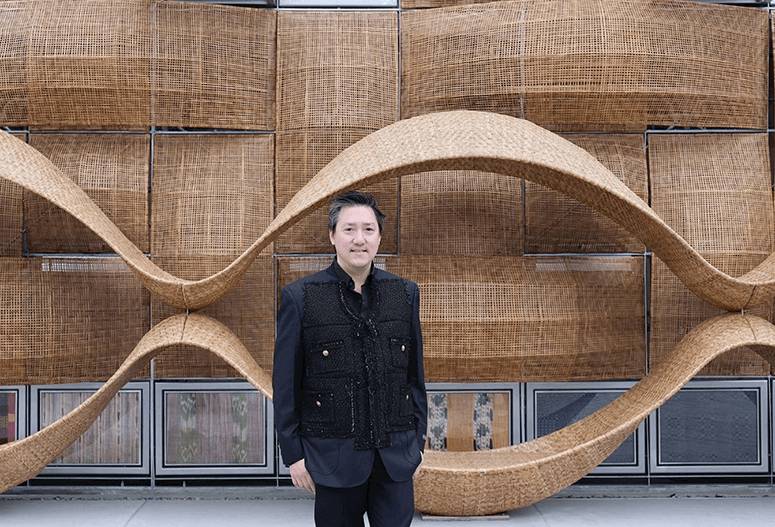
Approaching the pavilion, a surge of excitement courses through me. Standing before its artistry, I feel profound pride and elation. The long queue of visitors, stretching from 11 a.m. to 9 p.m., reflects the Philippine Pavilion’s universal appeal. From morning to night, crowds—both indoor and outdoor—engage with the pavilion’s offerings, their enthusiasm unwavering. The pavilion transforms with the hours: by day, sunlight dances across the rattan weave, highlighting intricate patterns that speak of resilience; at twilight, its illuminated facade glows with sophisticated elegance, beaming in the night sky.

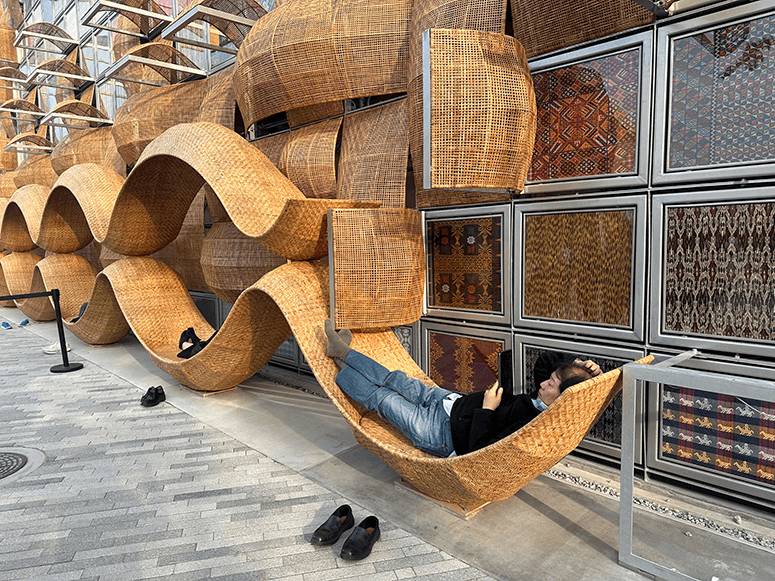
The pavilion also addresses the Expo’s theme, “Designing Future Society for Our Lives,” by embracing sustainability. The stackable rattan modules were designed and planned for easy disassembly, transport, and repurposing after the Expo’s six-month run, thus offering a model for eco-conscious architecture.
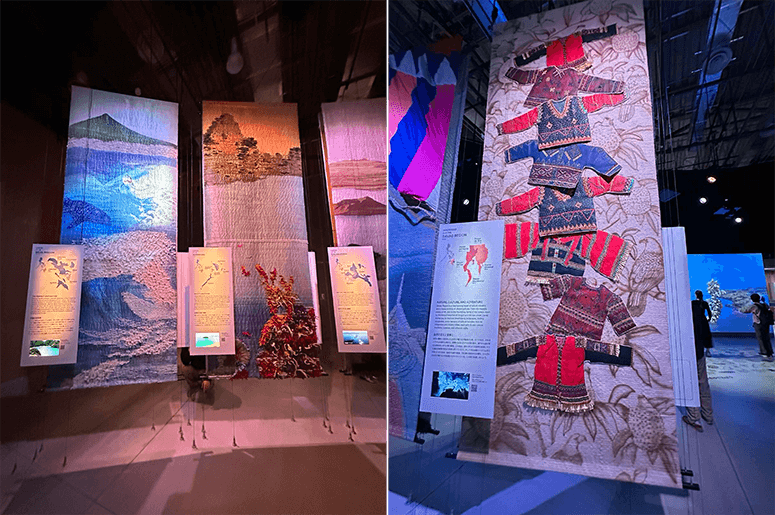
The Philippine Pavilion stands as more than an architectural feat—it is a vibrant celebration of Filipino identity and ingenuity. By blending cultural storytelling with sustainable design, it draws global visitors into the heart of the Philippines, leaving a lasting impression long after the Expo fades.
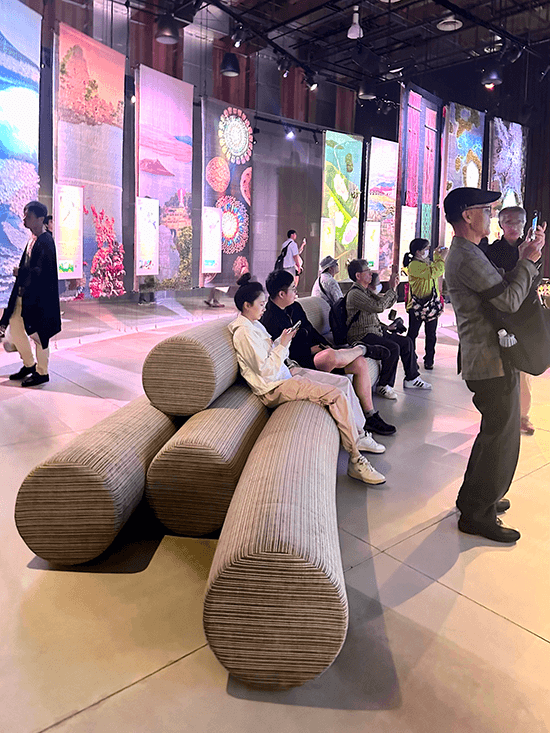
The entrance sets a dramatic tone, sparking anticipation for what lies ahead. You step through a dim hallway, where delicate sheets of fabric cascade from the ceiling, guiding you forward. Then, suddenly, the space opens into a vibrant lounge. Colorful woven banners adorn the walls, creating a visual feast. At the center, artfully placed woven “logs” serve as casual seating, inviting visitors to relax and take in the scene from any angle. Most choose to face the large screen, where lively footage of people interacting with nature-themed figures captivates the crowd.

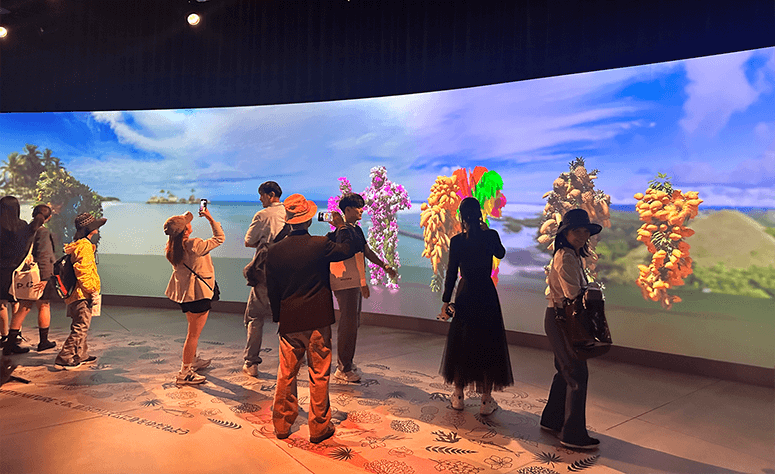
The star attraction, an interactive display called “Dancing with Nature,” draws enthusiastic laughter and excitement. Its popularity means waiting your turn, but the queue moves patiently, with everyone eager for a chance to join the fun.
Following the flow of the crowd, I explored elegantly showcased objects, each accompanied by concise, engaging descriptions. Unlike typical dull exhibit plaques, these were informative and approachable, making it easy to learn despite the bustling atmosphere.
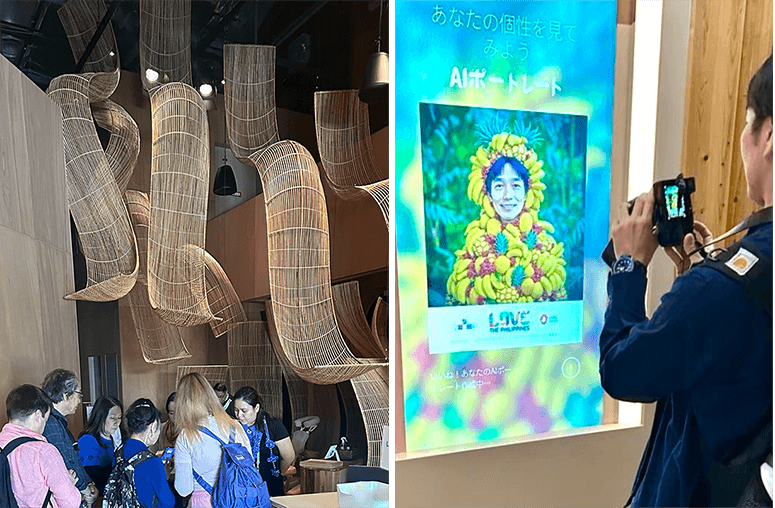
The Philippine Pavilion is modest in size, roughly a tenth of the sprawling US Pavilion next door. I couldn’t help but feel a bit irked that their massive virtual screen overshadowed our pavilion’s left side. Beyond the US, the even grander French
Pavilion looms large. Yet, nestled among these giants, our pavilion holds a prominent spot, proving we’re in excellent company. More importantly, its compact size never dulled its visual brilliance, captivating visitors from morning to night.
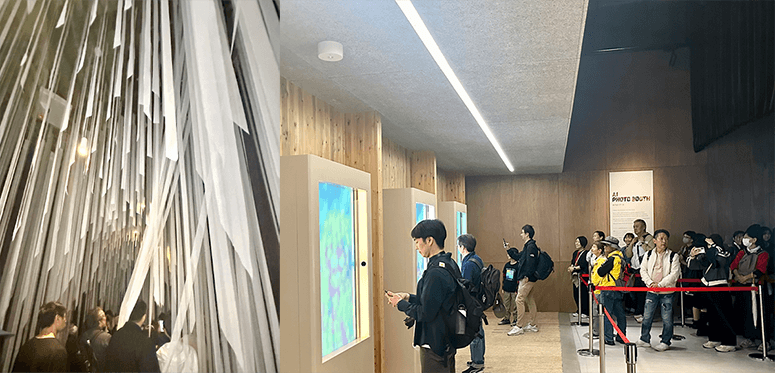
Many countries enlisted world-renowned architects like Kengo Kuma, Sir Norman Foster, Thomas Coldefy, and Carlo Ratti. Kuma alone designed three pavilions—Malaysia, Portugal and Qatar. For ours, the Philippines turned to our own Carlo Calma, whose inspired design made our pavilion shine brightly among the global greats.


